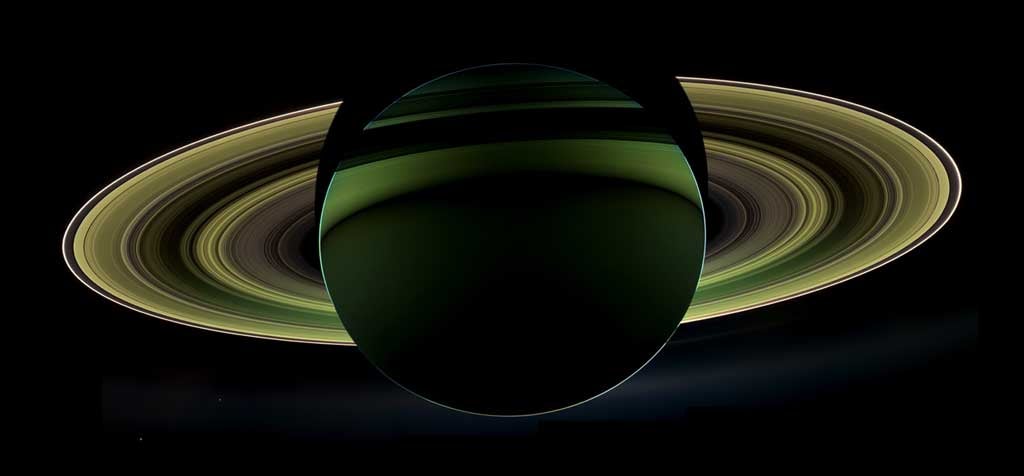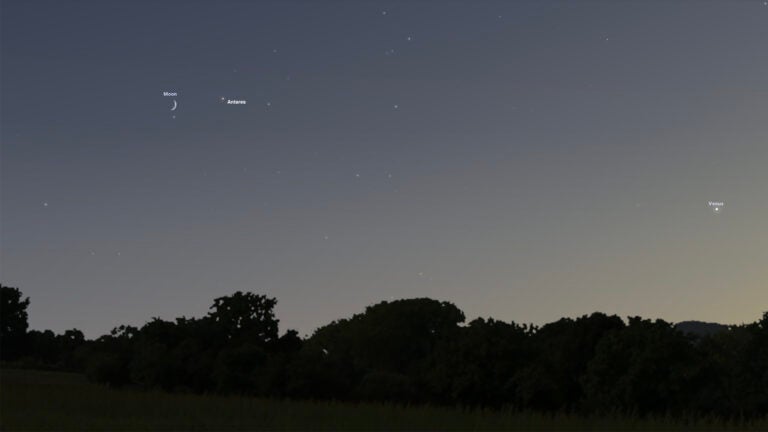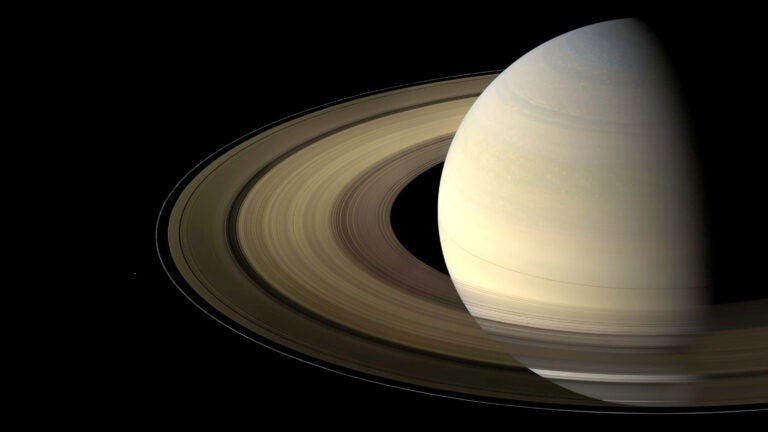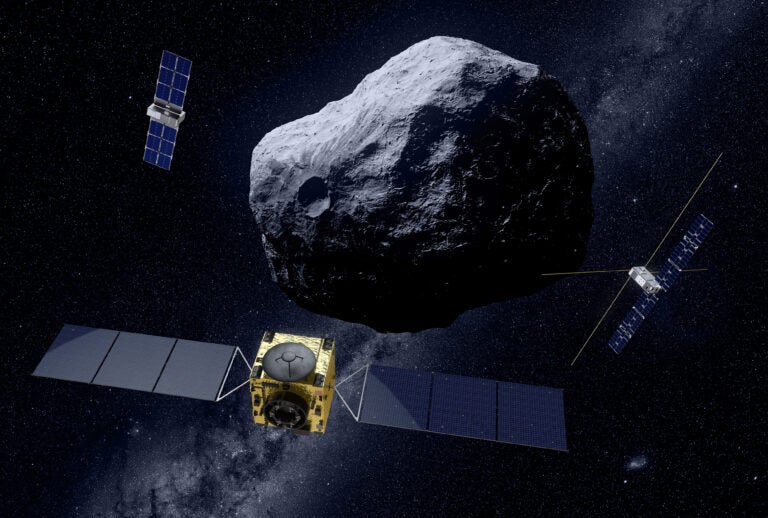One way to solve this paradox is to recycle the rings. If micrometeoroid contamination is limited to the ring particles’ surfaces, it is possible that when particles collide and re-accrete, or when large particles are broken up by meteoroid impacts, the pristine interior ice is exposed, making the particles look new again. Also, if the dense B ring has much more mass than expected, the ring can act as a reservoir for fresh ice, replenishing the entire ring system over time.
The mass of the B ring is unknown. The Cassini mission’s “Grand Finale” orbits in 2017 will place the spacecraft between the rings and Saturn and allow, for the first time, a direct measurement of the rings’ mass. This may help solve the paradox once and for all.
Recycling and replenishment use material already in the rings. Even though it may take billions of years to destroy them, the lifetime of Saturn’s rings is still finite.
Finally, we do know where two rings come from. The enormous faint E ring is produced from ice particles emitted by geysers on the moon Enceladus, while dust from the surface of the tiny moon Aegaeon replenishes the G ring.
SETI Institute, Mountain View, California










